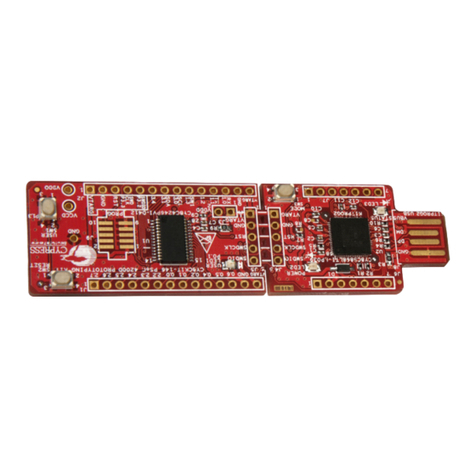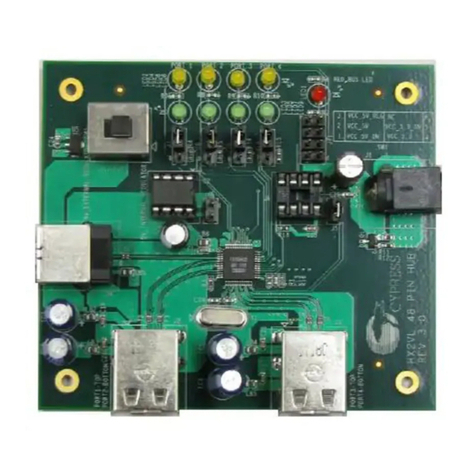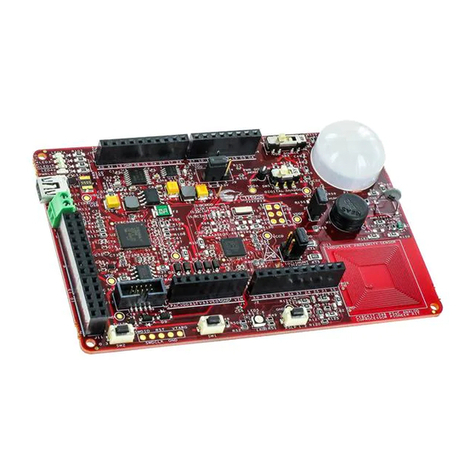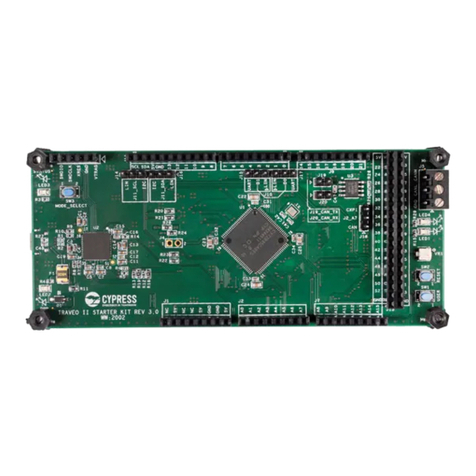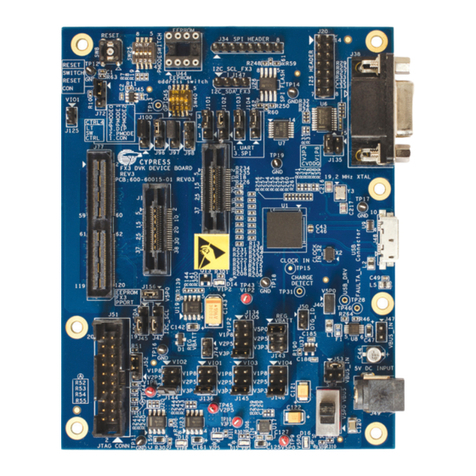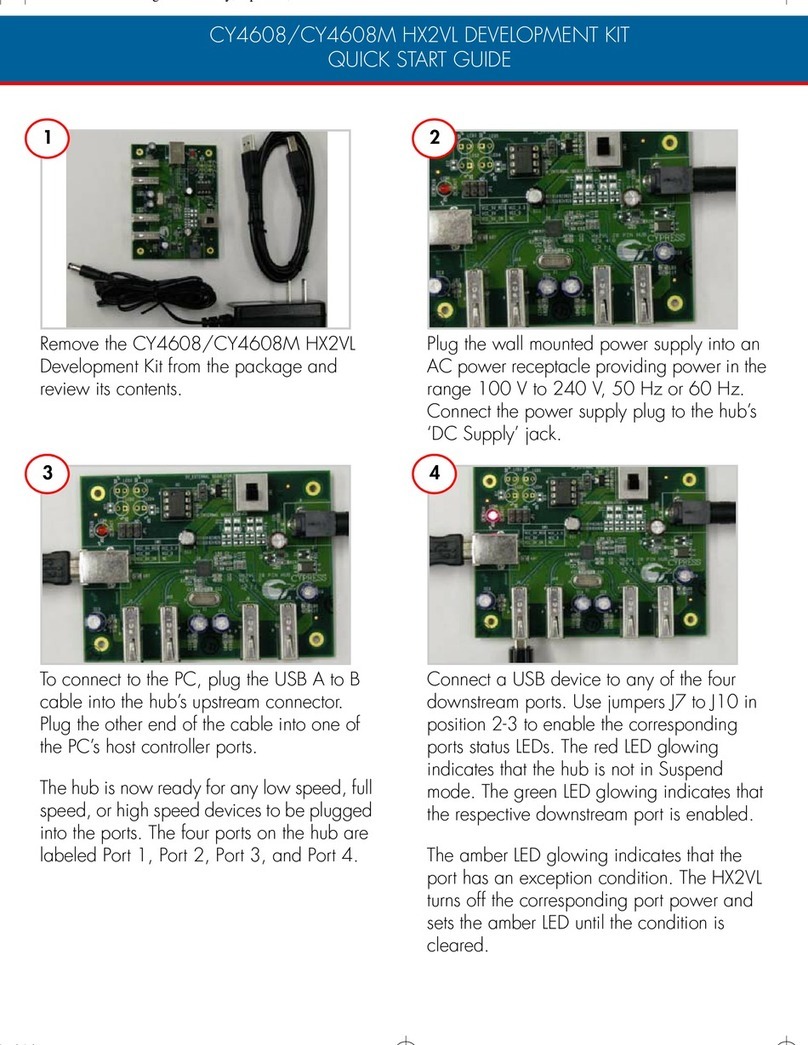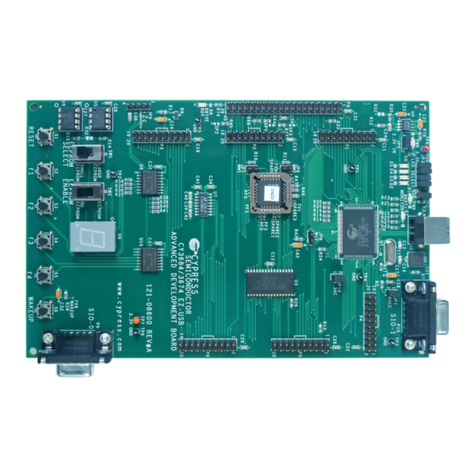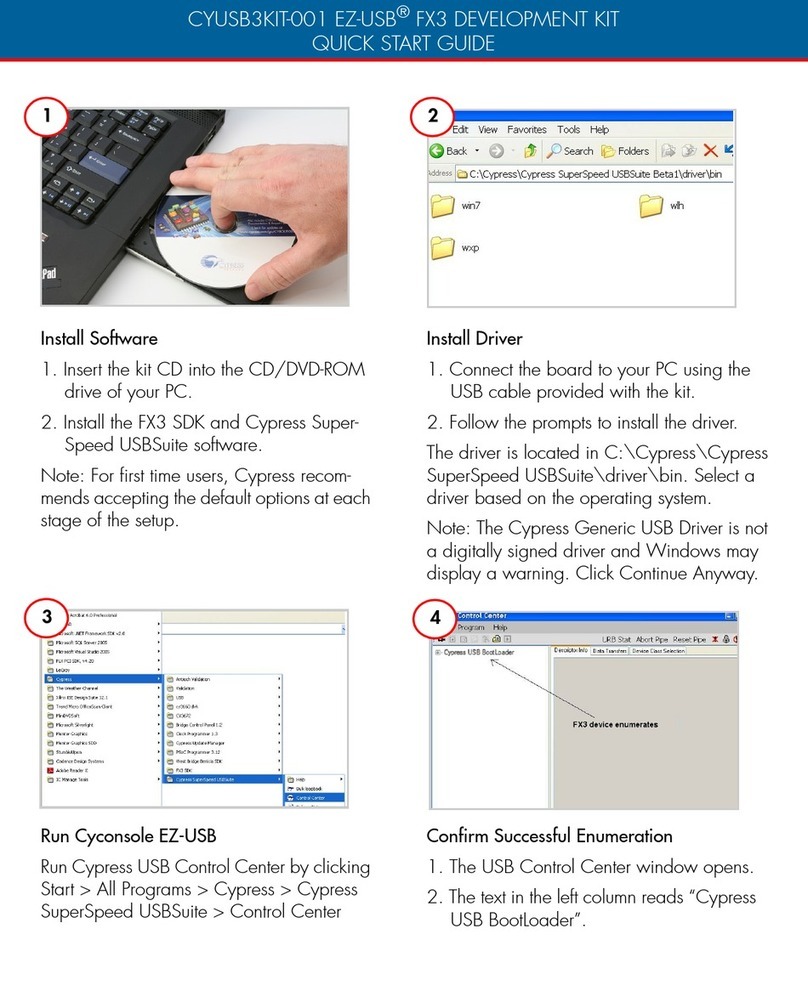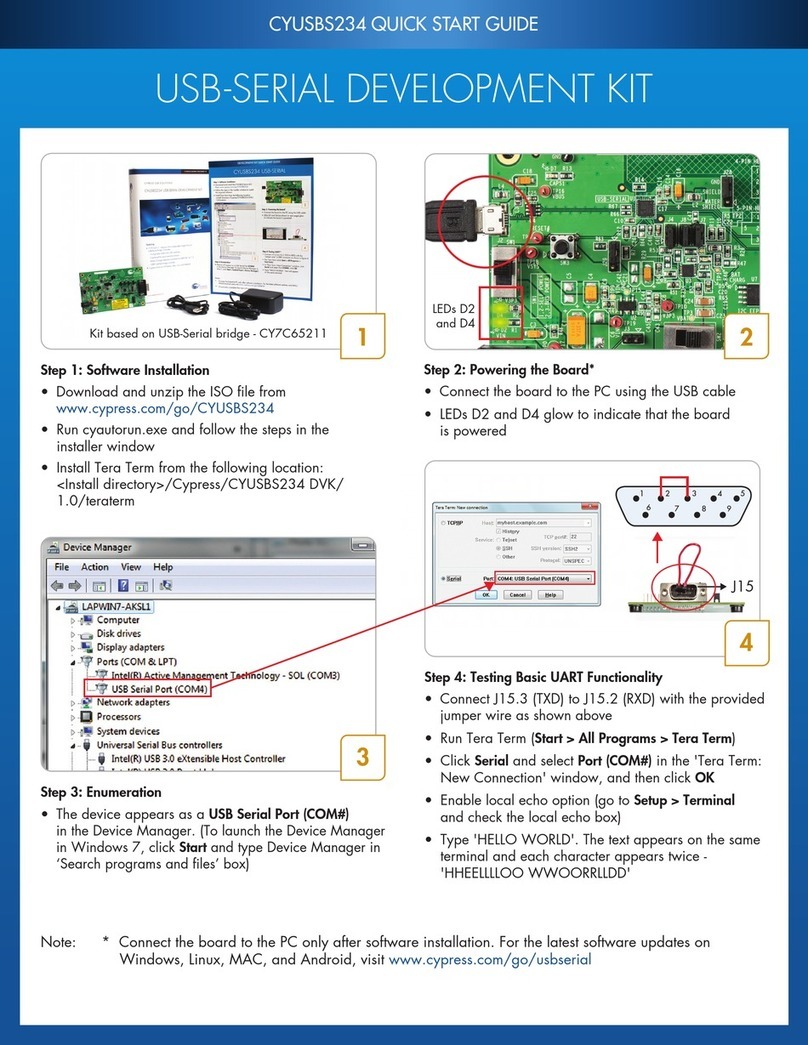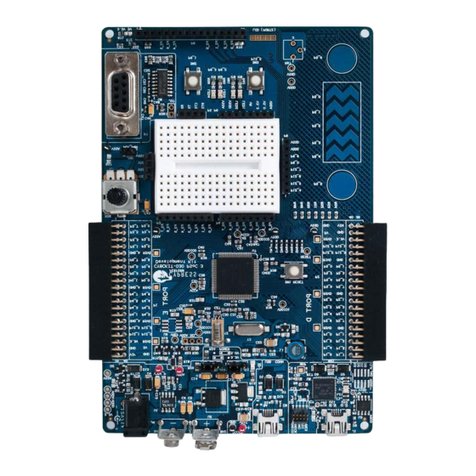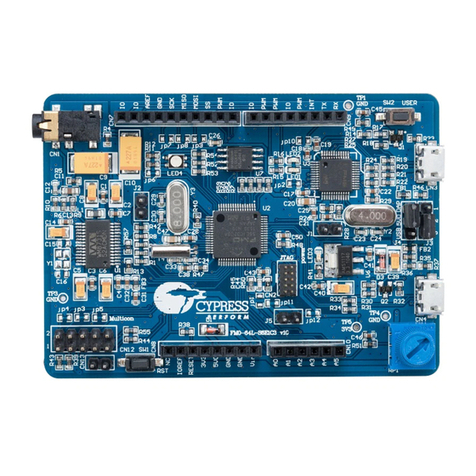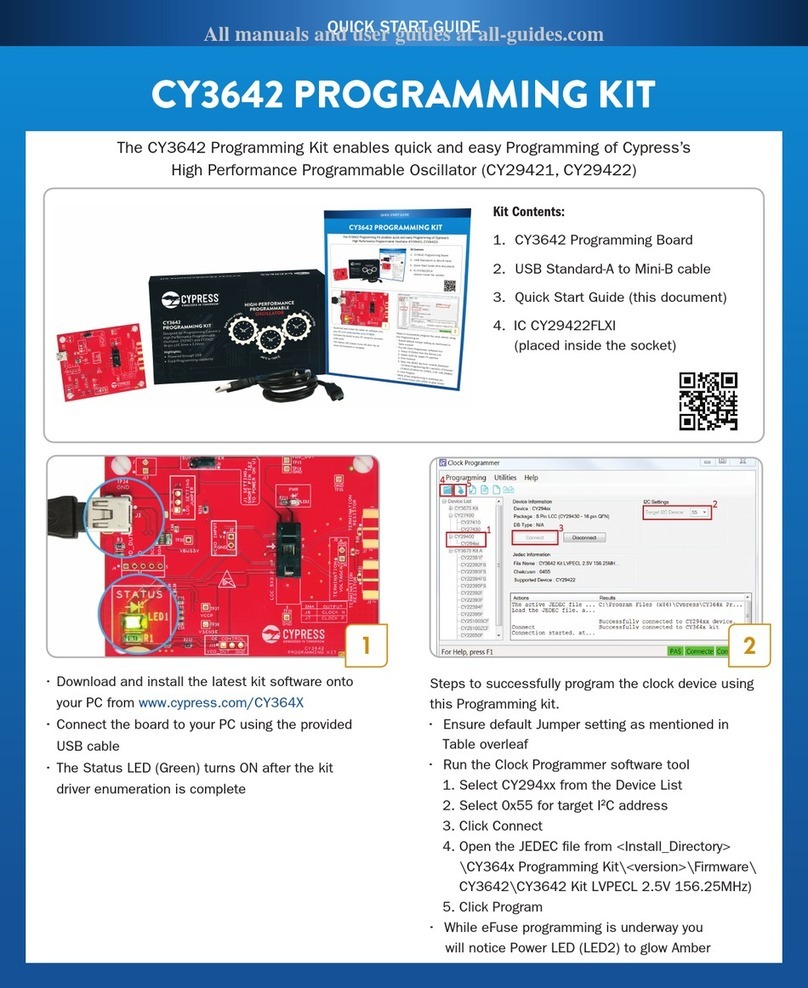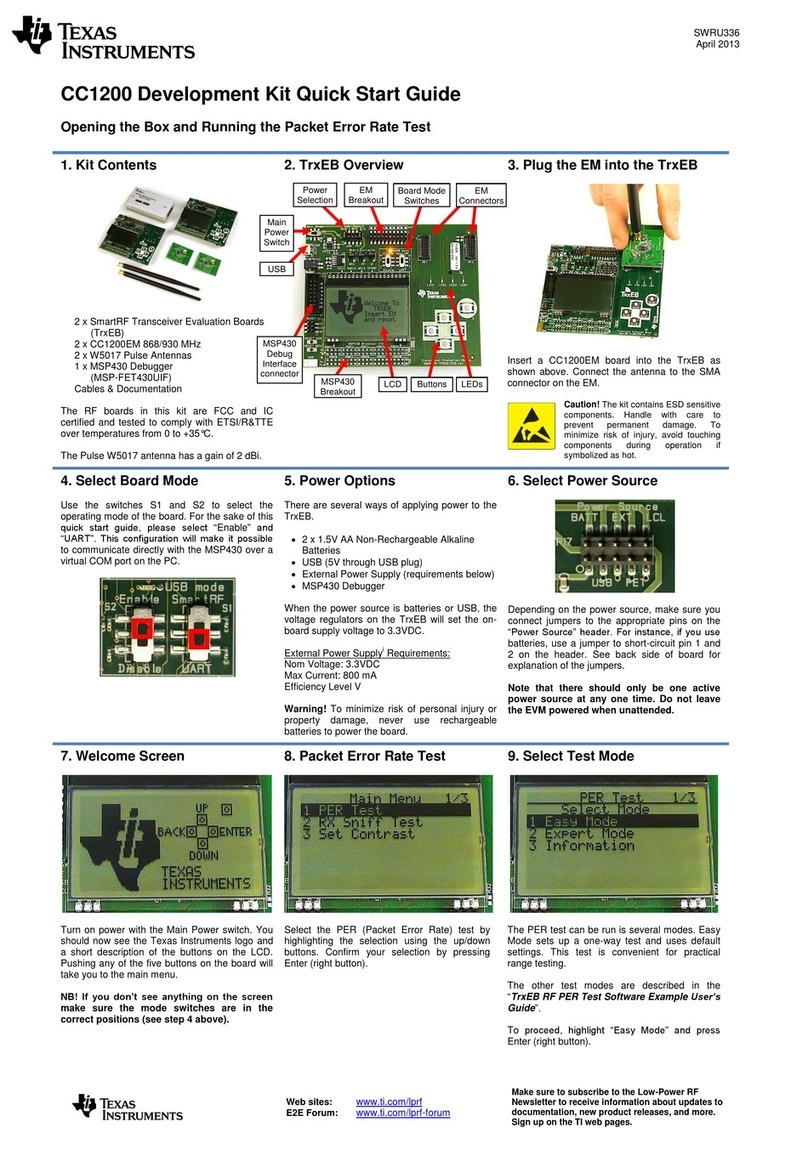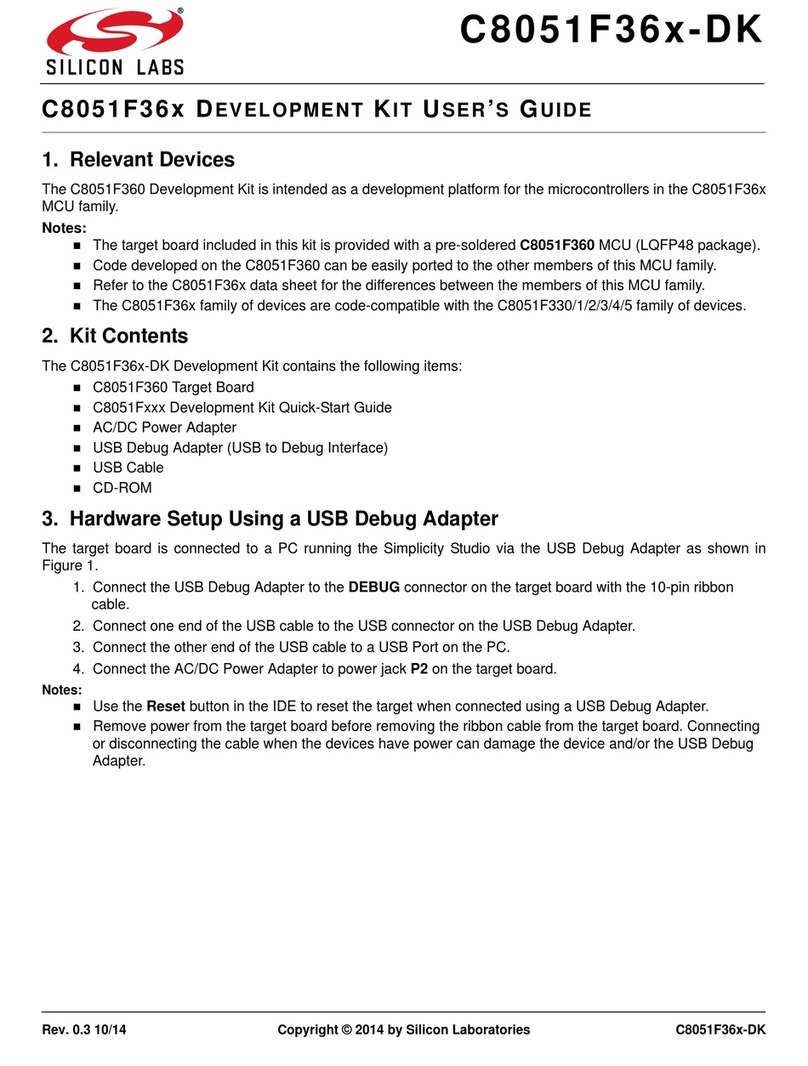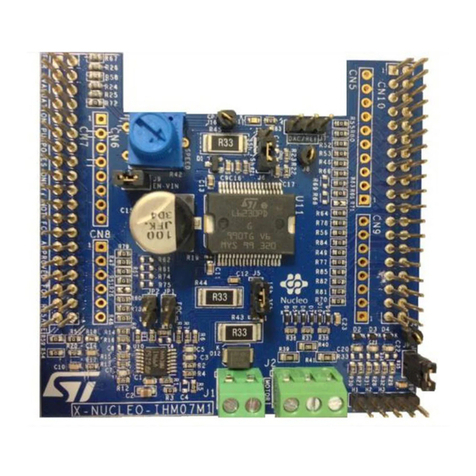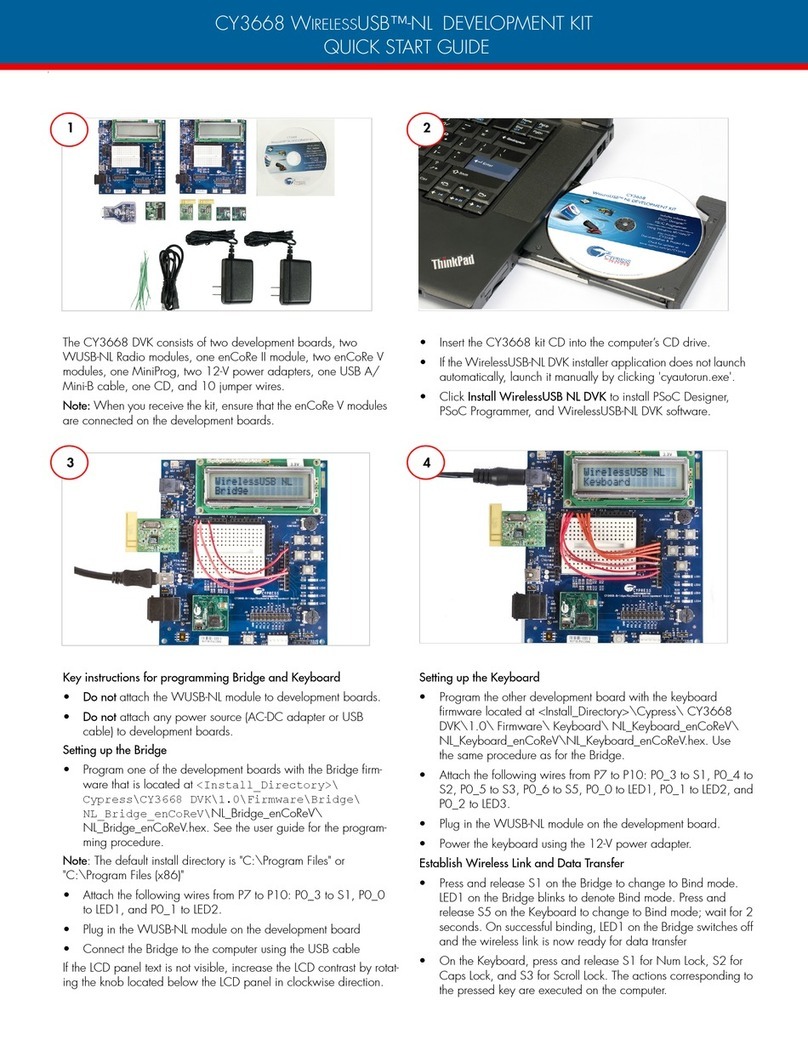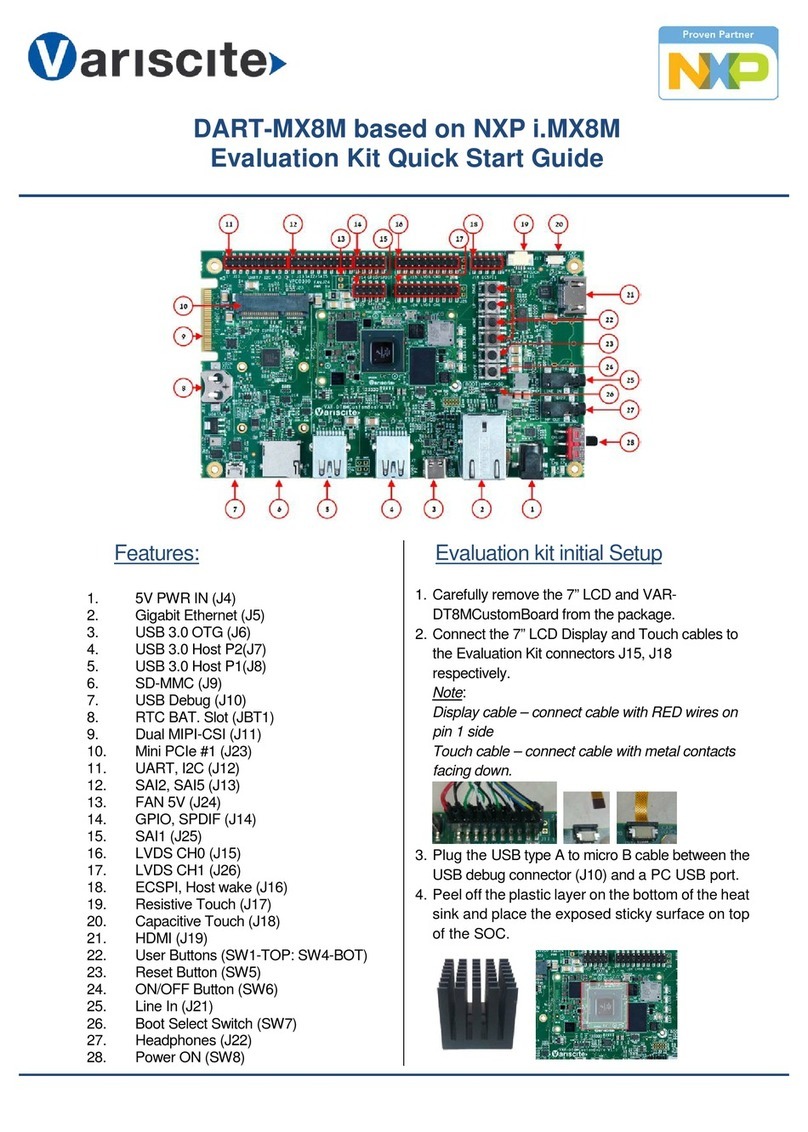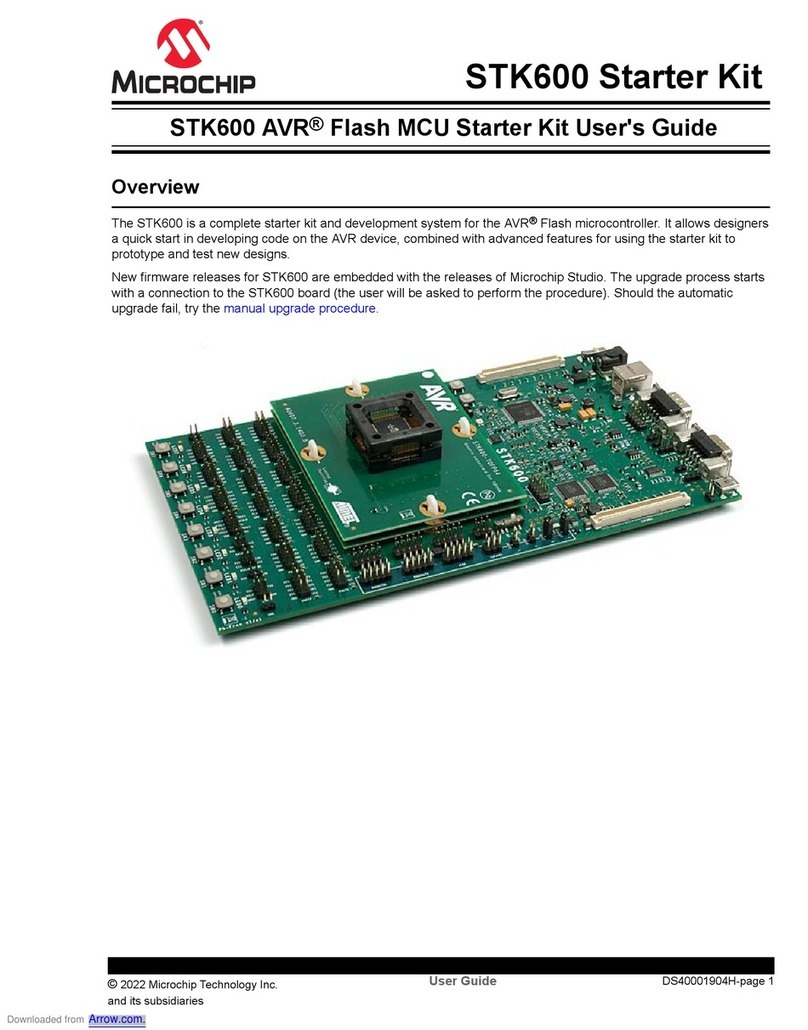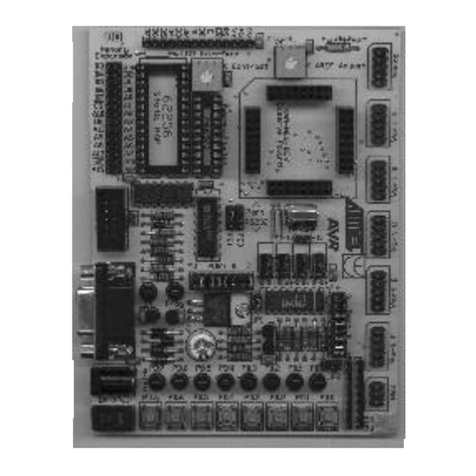
PSoC 4000 Family: PSoC 4 Architecture TRM, Document No. 001-89309 Rev. *D 15
Introduction
1.4 Memory
The PSoC 4 memory subsystem consists of a 16 KB flash
module with a flash accelerator, 2 KB SRAM, and 4 KB
supervisory ROM options. The flash accelerator improves
the average access times from the flash block delivering
85 percent of single-cycle SRAM access performance. A
powerful and flexible protection model allows you to selec-
tively lock blocks of memory for read and write protection,
securing sensitive information. Additionally, all device inter-
faces can be permanently disabled for applications con-
cerned about phishing attacks due to a maliciously
reprogrammed device or attempts to defeat security by
starting and interrupting flash programming sequences. The
supervisory ROM is used to store the boot and configuration
routines.
1.5 System-Wide Resources
1.5.1 Clocking System
The clocking system for the PSoC 4 device consists of the
internal main oscillator (IMO) and internal low-speed oscilla-
tor (ILO) as internal clocks and has provision for an external
clock.
The system clock (SYSCLK) required for the CPU system
and the high-frequency clock (HFCLK) required by the
peripherals can be as high as 16 MHz. These clocks are
generated from the IMO.
The IMO with an accuracy of ±2 percent is the primary
source of internal clocking in the device. The default IMO
frequency is 24 MHz and it can be adjusted between 3 MHz
and 48 MHz in steps of 1 MHz. The default IMO frequency is
24 MHz and can be adjusted between 24 MHz and 48 MHz
in steps of 4 MHz. Multiple clock derivatives are generated
from the main clock frequency to meet various application
needs.
The ILO is a low-power, less accurate oscillator and is used
to generate clocks for peripheral operation in Deep-Sleep
mode. Its clock frequency is 32 kHz with ±60 percent accu-
racy.
An external clock source ranging from MHz to 16 MHz can
be used to generate the clock derivatives for the functional
blocks instead of the IMO.
1.5.2 Power System
The PSoC 4 operates with a single external supply in the
range 1.71 V to 5.5 V.
PSoC 4 has two low-power modes – Sleep and Deep-Sleep
– in addition to the default Active mode. In Active mode, the
CPU runs with all the logic powered. In Sleep mode, the
CPU is powered off with all other peripherals functional. In
Deep-Sleep mode, the CPU, SRAM, and high-speed logic
are in retention; the main system clock is OFF while the low-
frequency clock is ON and the low-frequency peripherals
are in operation.
Multiple internal regulators are available in the system to
support power supply schemes in different power modes.
1.5.3 GPIO
Every GPIO in PSoC 4 has the following characteristics:
■Eight drive strength modes
■Individual control of input and output disables
■Hold mode for latching previous state
■Selectable slew rates
■Interrupt generation – edge triggered
The PSoC 4 also supports CapSense capability on 17 out of
20 GPIOs. The pins are organized in a port that is 8-bit wide.
A high-speed I/O matrix is used to multiplex between vari-
ous signals that may connect to an I/O pin. Pin locations for
fixed-function peripherals are also fixed.
1.6 Fixed-Function Digital
1.6.1 Timer/Counter/PWM Block
The Timer/Counter/PWM block consists of a 16-bit counter
with user-programmable period length. The TCPWM block
has a capture register, period register, and compare register.
The block supports complementary, dead-band programma-
ble outputs. It also has a kill input to force outputs to a pre-
determined state. Other features of the block include center-
aligned PWM, clock prescaling, pseudo random PWM, and
quadrature decoding.
1.6.2 Serial Communication BlocksI2C
Block
The PSoC 4 has a fixed-function I2C interface. The I2C
interface can be used for general-purpose I2C communica-
tion and for tuning the CapSense component for optimized
operation.
The features of the I2C block include:
■Standard I2C multi-master and slave function
■EZ function mode support with 32-byte buffer
1.7 Special Function Peripherals
1.7.1 CapSense
PSoC 4 devices have the CapSense feature, which allows
you to use the capacitive properties of your fingers to toggle
buttons and sliders. CapSense functionality is supported on
all but three GPIO pins in PSoC 4 through a CapSense
Sigma-Delta (CSD) block. The CSD also provides water-
proofing capability.


















